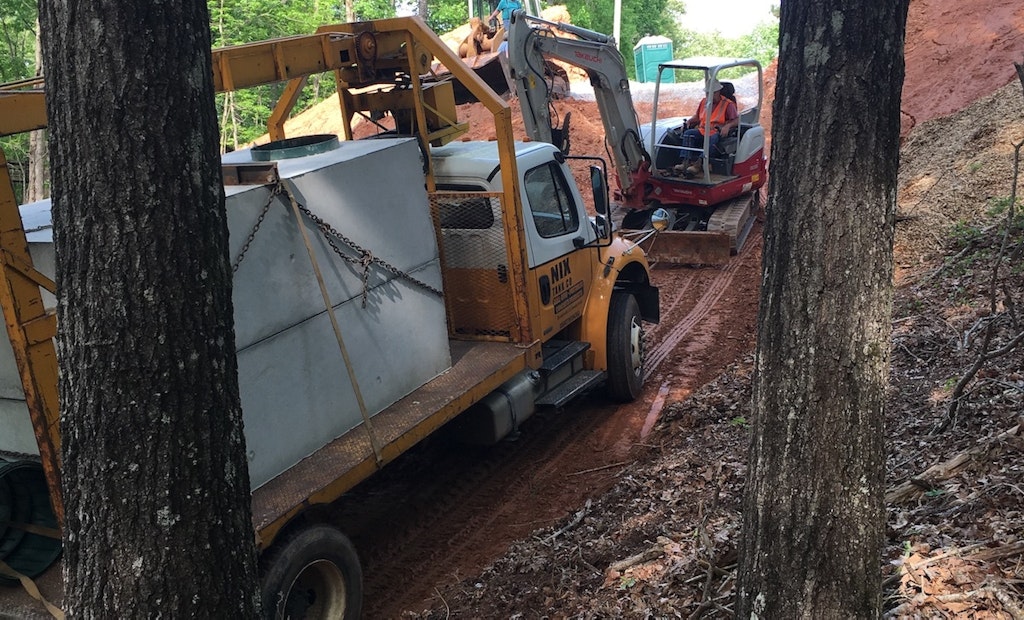
Harold Kilgore eases the tank truck down a 35% to 40% slope using the Takeuchi TB260 compact excavator as a brake. (Photo courtesy of On-Site Wastewater Consultants)
A couple purchased a wooded 0.4-acre lot on sprawling Lake Lanier in the northern region of Georgia, unaware that the Hall County Environmental Health Department had revised the original approval from a three-bedroom home to a one-bedroom cottage.
“In addition, there was no...





